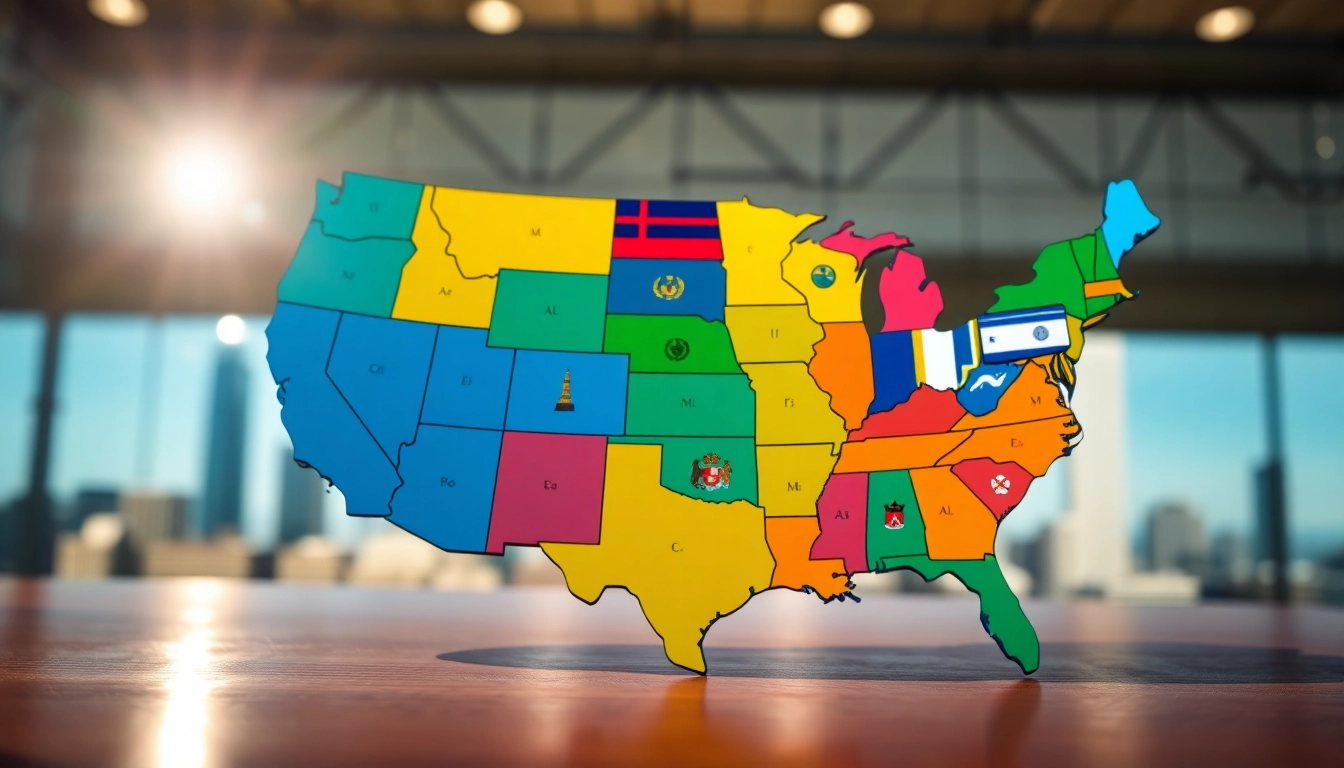Understanding the Concept of a State
Definition and Characteristics of a State
A state, in political terms, is a structured societal organization that is sovereign over a defined territory and composed of a population governed by a designated authority. According to State concepts, it fundamentally focuses on the governance of laws, rights, and duties among its people. A key defining characteristic of a state is its ability to enact legislation, enforce laws, and maintain order through various institutions such as the executive, legislative, and judicial branches. States also possess sovereignty, meaning they have the ultimate authority over their territory and are recognized as such internationally.
The concept of a state can vary widely across different political contexts. For example, in a federal system like that of the United States, a “state” refers to subdivisions of the federation with their own governments, while in other contexts, it might refer exclusively to a sovereign nation. The recognition of a state often correlates with its ability to maintain governance and social order, control its territory, and sustain diplomatic relations with other states.
Historical Development of States
The evolution of states is deeply intertwined with the development of human societies. Early human groups operated as tribes or clans, which lacked formal governance structures. As populations grew, the need for formal organization gave rise to city-states, particularly in civilizations like Mesopotamia around 3000 BC, where the first city-states emerged, showcasing complex social hierarchies and organized governments.
Over centuries, various forms of states developed, including empires that expanded through conquest (e.g., the Roman Empire) and nation-states that emerged in Europe during the early modern period. The Treaty of Westphalia in 1648 is significant as it established the principles of national sovereignty and non-interference, shaping modern state concepts. This transition marked the move away from feudal structures towards centralized governments, emphasizing the role of the state over individual domains.
The Role of States in Political Organization
In contemporary politics, states serve as fundamental units of political organization. They are essential for creating and enforcing laws, regulating economic activities, and providing public services. Governments within states are responsible for maintaining social order, providing security, and facilitating economic stability. Additionally, states operate as actors on the international stage, engaging in treaties, alliances, and conflicts.
The role of states is not limited to governance; they also engage in fostering national identity and cohesion among citizens. Through education, cultural programs, and public policies, states work to unify diverse populations, promoting a sense of belonging and national pride. States are also pivotal in addressing global challenges such as climate change, public health, and international security through collaborative efforts in international organizations.
Political Structure: How States Govern
Branches of State Government
Most modern states are characterized by a triadic structure of government encompassing the executive, legislative, and judicial branches. This separation of powers is designed to prevent abuse of power and ensure that government actions reflect the will of the people.
The executive branch, led by a president or prime minister, is responsible for implementing laws and overseeing the day-to-day functions of government. The legislative branch, often a bicameral assembly, creates laws and provides a framework for governance through discussion and voting. Finally, the judicial branch interprets laws and adjudicates disputes, ensuring justice and the rule of law are upheld.
An example of a well-established separation of powers can be found in the United States, where checks and balances among branches are an integral part of its constitutional democracy. Such mechanisms prevent any single branch from gaining excessive power, fostering accountability and transparency.
State Constitutions and Legal Framework
Each state operates under its own constitution, a foundational legal document that outlines the structure of government, the rights of citizens, and the laws governing the state. State constitutions can vary significantly from one state to another, reflecting their unique historical, cultural, and social contexts.
In addition to constitutions, states are governed by statutory laws which are enacted through the legislative process. This legal framework is vital for maintaining order and ensuring that individuals are held accountable to the law. Case law, or judicial interpretations of statutes, also plays a critical role in shaping the legal landscape of states, influencing both the application of laws and individuals’ rights.
Electoral Processes at the State Level
Electoral processes are crucial to the functioning of state government, providing citizens with the opportunity to participate in democracy. State elections are held for various positions including governors, state legislators, and local representatives. These elections empower citizens to influence decision-making and hold elected officials accountable.
Each state establishes its own rules regarding the electoral process, including voter registration, voting methods (such as in-person or absentee ballot voting), and electoral districting. Policies like “one-person, one-vote” ensure fair representation, though challenges persist, such as voter suppression and gerrymandering, which can impact the integrity of electoral outcomes.
As technology evolves, states are incorporating more digital processes into elections, increasing access to voting while striving to secure the integrity of the electoral process. The discussion surrounding electoral reform continues to be pertinent, as states adapt to contemporary political landscapes.
Importance of States in Federal Systems
State vs. Federal Authority
In a federal system, there exists a division of powers between national and state governments. Federal laws are generally supreme, but states retain the authority to legislate on a wide array of issues unless explicitly restricted by federal law. This balance defines the dynamic between state and federal governance.
States are responsible for a variety of critical functions, including education, transportation, and public health, which can vary considerably in their execution based on local needs and concerns. This autonomy allows states to tailor policies to better suit their populations, fostering innovation in governance.
State Responsibilities and Powers
States have distinct responsibilities, including managing local law enforcement, conducting elections, and implementing education and transportation policies. They also have the authority to enact laws in areas such as healthcare and social services. While states’ powers are broad, they are ultimately derived from the consent of the governed, highlighting the importance of active citizenship and engagement in state politics.
The powers of states can include taxation authority, public health and safety regulations, and infrastructure development. Such responsiveness aids in addressing regional disparities, with states often serving as testing grounds for new legislation that may later influence national policies.
Interactions Between States and the Federal Government
The relationship between state and federal governments is often complex, characterized by collaboration and contention. Federal policies may dictate standards that states must adhere to while alternatively providing grants that empower states to implement programs meeting federal goals. However, tensions arise in areas where states seek to exert their authority contrary to federal mandates, leading to legal battles over interpretation and enforcement.
Interstate relations are also noteworthy, as states must navigate issues such as resource allocation, environmental protection, and transportation regulations. Conferences and agreements among states help facilitate cooperation, ensuring that shared challenges are addressed collectively.
Current Issues Facing State Governments
Challenges in State Governance
State governments face myriad challenges, including budget constraints, political polarization, and the need to address social inequalities. Economic downturns can significantly impact state revenues, pushing governors and legislatures to make difficult choices regarding spending and prioritization of services.
Additionally, the complexity of diverse populations can lead to conflicting policy viewpoints, complicating consensus-building. States are faced with the ongoing need to improve educational outcomes, reduce crime rates, and ensure healthcare access amidst rising costs and varying local demands.
Policy Innovations at the State Level
In response to challenges, states often turn to innovative policy solutions. Examples include implementing universal pre-K programs, expanding Medicaid under the Affordable Care Act, and creating renewable energy initiatives. States that embrace progressive approaches can test hypotheses about best practices in policy implementation.
The collaboration between state governments and local communities can also lead to unique solutions that directly reflect the needs of citizens. These initiatives highlight the agility of state governance, granting them the ability to respond swiftly to emerging challenges compared to more cumbersome federal structures.
The Impact of State Decisions on Citizens
Decisions made at the state level have profound implications for citizens’ daily lives, influencing education quality, public safety, health services, and economic opportunities. Policies such as tax regulations, labor laws, and environmental protections directly affect personal financial decisions and career prospects. Consequently, the impact of state governance extends far beyond the political arena into the everyday experiences of individuals.
Moreover, states serve as laboratories of democracy where policy innovations can be tested on local citizens, ultimately serving as examples or cautionary tales for other states and the federal government. The success or failure of state policies can reverberate across the nation, influencing the overarching national dialogue on pressing issues.
Future Trends in State Politics
Emerging Political Movements Within States
Political movements originating at the state level are increasingly shaping national conversations. Issues such as climate change legislation, criminal justice reform, and healthcare accessibility often see state-level movements gaining traction and mobilizing grassroots support. These movements reflect shifting values and ideologies, often challenging entrenched political norms.
As citizens become more engaged in advocacy, states are increasingly viewed as battlegrounds for progressive change that can influence congressional representation and national policy. Mobilizing technology, social media, and community organizing can amplify these movements, illustrating a dynamic shift in how political power and engagement manifest.
The Role of Technology in State Governance
Technology’s influence on state governance continues to grow, altering how governments interact with citizens and how services are delivered. E-governance initiatives aim to improve transparency and efficiency, allowing citizens to access services and information seamlessly online. From digital voting platforms to virtual public hearings, technology is reshaping democratic processes.
Data analytics and artificial intelligence also enhance policy-making by providing insights into citizen needs and resource allocation. Subsequently, states that effectively integrate technology may optimize their operations, offering enhanced services and engagement opportunities.
Predicting Future Changes in State Laws
As states continue to evolve in response to changing demographics and societal needs, future changes in state laws are likely to reflect broader trends in social justice, environmental conservation, and economic reform. Legislative changes may emerge as states adapt to the challenges of climate change and public health crises, evolving to protect public welfare in unprecedented ways.
Additionally, the influence of progressive advocacy groups and a more connected citizenry may lead to transformative law reforms covering critical issues like police accountability, reproductive rights, and workers’ protections. Analyzing current trajectories can help predict how states will legislate in an increasingly interconnected and complex global landscape.



